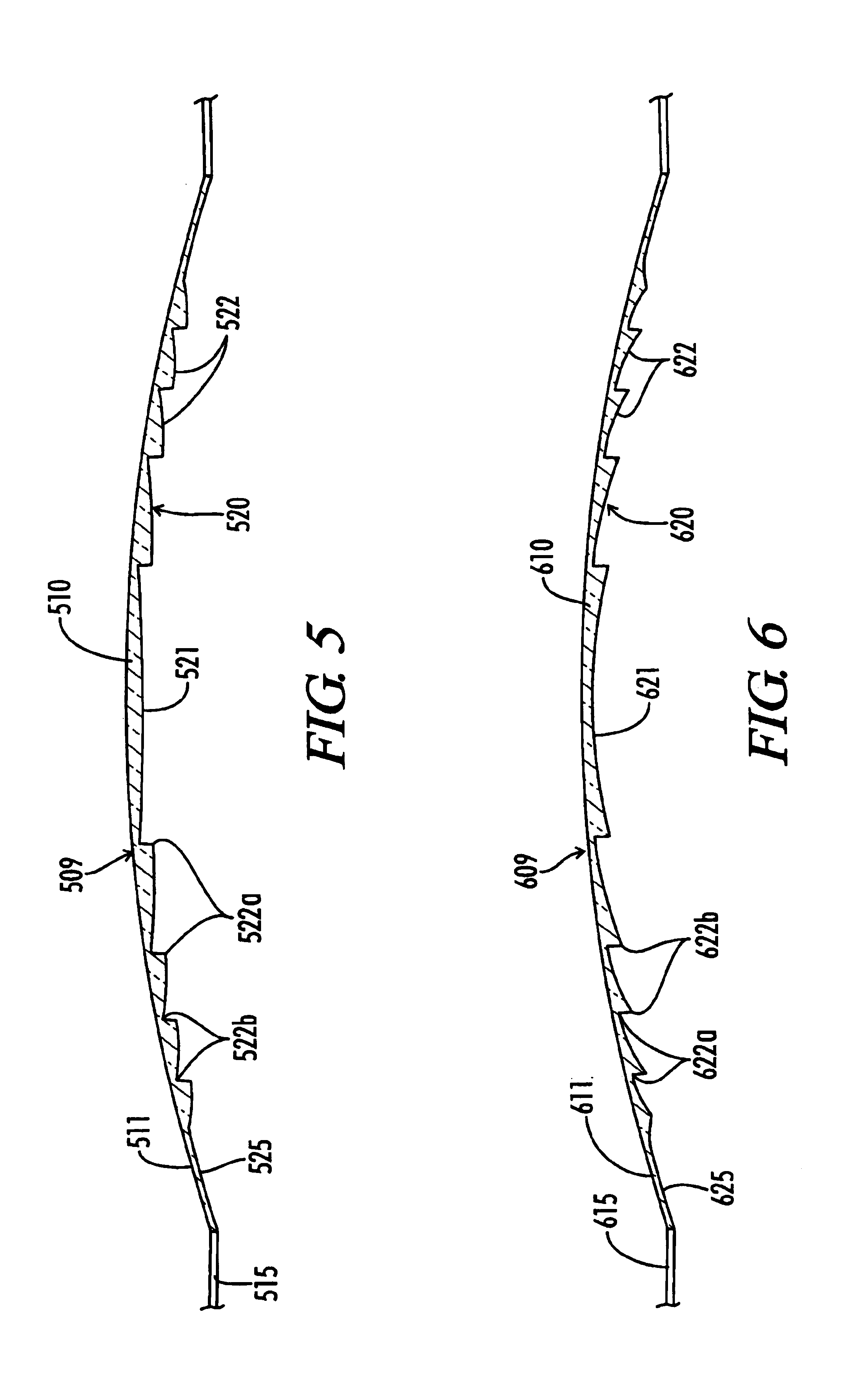Deformable intraocular corrective lens
- Summary
- Abstract
- Description
- Claims
- Application Information
AI Technical Summary
Benefits of technology
Problems solved by technology
Method used
Image
Examples
second embodiment
[0045]FIG. 5 is a cross-sectional fragmented view of the invention. In this alternate embodiment, the anterior lenticular surface 510 of the optic portion 509 is of the same convex shape as in the previously described embodiment. The posterior surface 520 comprises a central disk 521 which is surrounded by a plurality of annular rings 522. The central disk 521 and series of annular rings 522 form a series of radial steps across the posterior surface 520 to maintain a close proximity to the lenticular surface 510.
[0046]In this embodiment, the surfaces of the central disk 521 and each of the annular rings 522 are convex. The thickness of the central disk 521 at the apex of the lenticular surface 10 is less than or equal to the predetermined maximum thickness. The thickness of the periphery of the central disk 521 is greater than or equal to a predetermined minimum thickness.
[0047]Each annular ring 521 has an external point 522a and an internal diameter 522b. The thickness of the conta...
third embodiment
[0048]FIG. 6 is a cross-sectional fragmented view of the invention. In this alternate embodiment, the anterior lenticular surface 610 of the optic portion 609 is of the same convex shape as in the previously described embodiments. The posterior surface 620 comprises a central disk 621 which is surrounded by a plurality of annular rings 622. The central disk 621 and series of annular rings 622 form a series of radial steps across the posterior surface 620 to maintain a close proximity to the lenticular surface 610.
[0049]In this embodiment, the surfaces of the central disk 621 and each of the annular rings 622 are concave. The thickness of the central disk 621 at the periphery of the central disk 621 is less than or equal to the predetermined maximum thickness. The thickness of the lens between the apex of the lenticular surface 610 and the central disk 621 is greater than or equal to a predetermined minimum thickness.
[0050]Each annular ring 621 has an internal diameter 622a and an ex...
PUM
 Login to View More
Login to View More Abstract
Description
Claims
Application Information
 Login to View More
Login to View More - R&D
- Intellectual Property
- Life Sciences
- Materials
- Tech Scout
- Unparalleled Data Quality
- Higher Quality Content
- 60% Fewer Hallucinations
Browse by: Latest US Patents, China's latest patents, Technical Efficacy Thesaurus, Application Domain, Technology Topic, Popular Technical Reports.
© 2025 PatSnap. All rights reserved.Legal|Privacy policy|Modern Slavery Act Transparency Statement|Sitemap|About US| Contact US: help@patsnap.com



